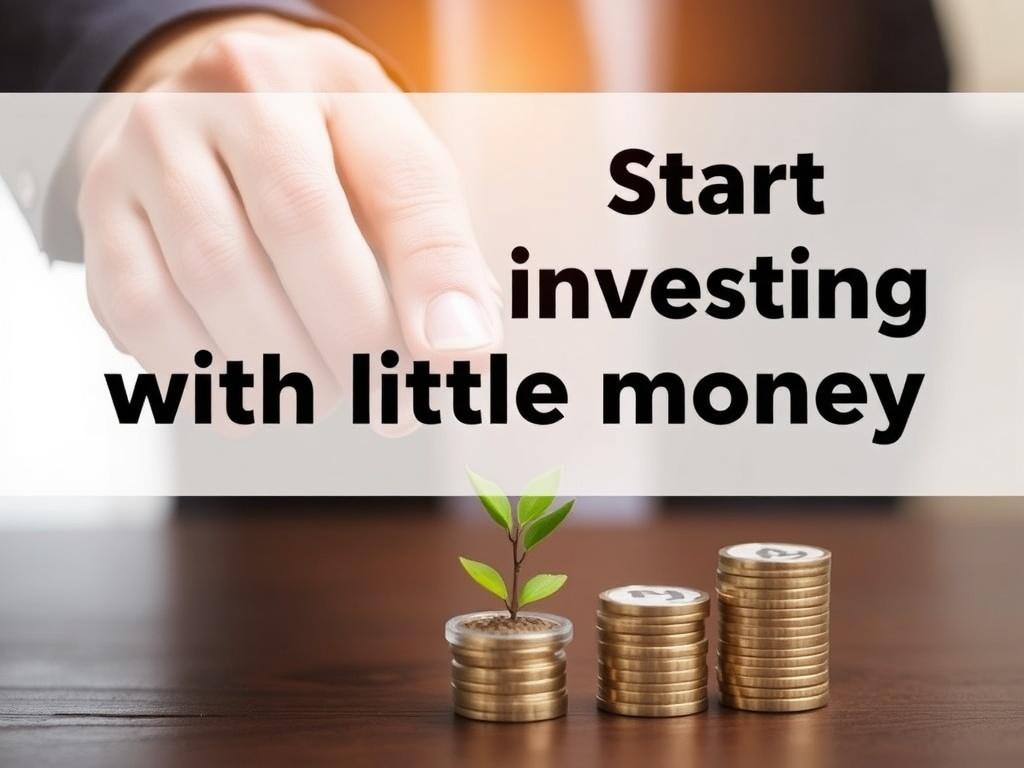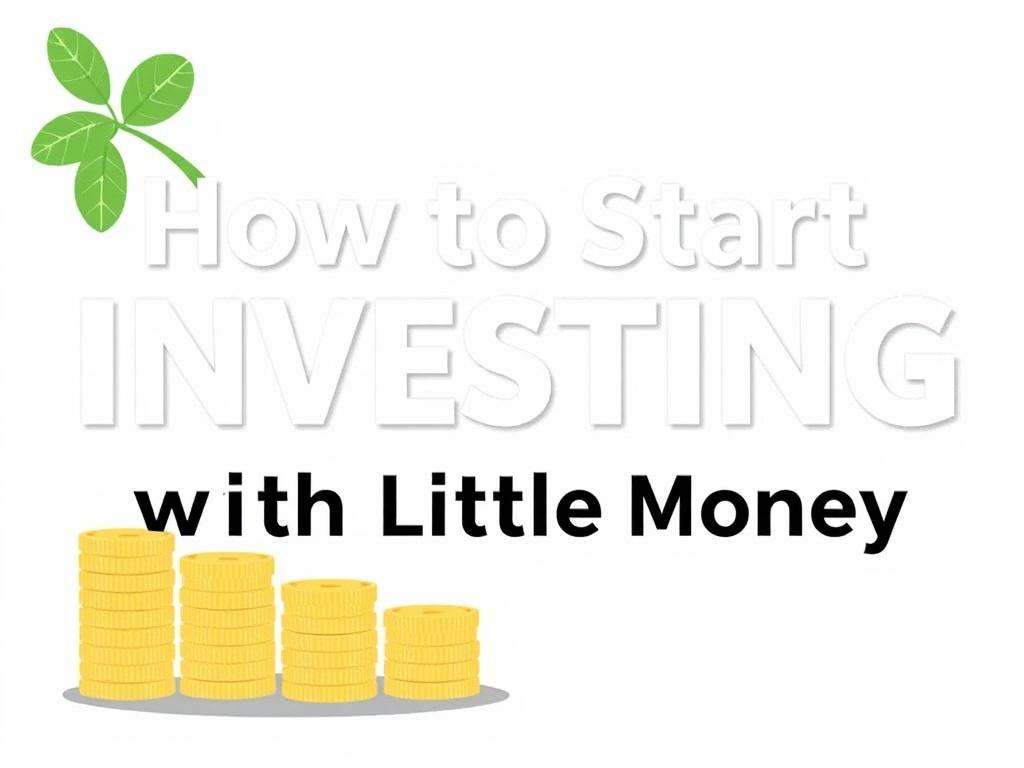SQLITE NOT INSTALLED
Содержание
Understanding the Basics of Investing
Starting your investment journey can feel overwhelming, especially if you have little money to begin with. Many people assume that investing is only for the wealthy, but that’s simply not true. Investing with little money is not only possible but also a smart way to build financial security over time. The key lies in understanding the fundamentals of investing and learning how to make your money work for you, no matter how small your initial budget might be.
At its core, investing is about putting your money into assets—like stocks, bonds, or real estate—that have the potential to grow in value or generate income over time. Unlike saving, which generally involves storing cash in low-interest accounts, investing carries some risk but also offers the chance of greater rewards. The earlier you start, even with a modest amount, the better positioned you’ll be to benefit from compound growth, which means your earnings generate their own earnings.
Why Starting with Little Money Matters

You might wonder: “Why should I bother investing if I only have a small amount to begin with?” The truth is that getting started is the most important step. Investing small amounts consistently can build good financial habits and grow into a substantial nest egg. Waiting to save a large sum before investing can delay your opportunity to benefit from market growth.
Moreover, today’s financial technology and investment options have made it easier than ever to start with little money. Many online platforms and apps offer fractional shares, zero-commission trades, and low minimum balance requirements, which means you don’t need thousands of dollars to get your foot in the door.
How to Start Investing with Little Money: Step-by-Step
Step 1: Set Clear Financial Goals
Before you even open an investment account, take a moment to think about why you want to invest. Are you saving for retirement, a home, education, or simply to build wealth? Your goals will help determine your investment strategy, risk tolerance, and time horizon.
Step 2: Build an Emergency Fund
Investing with little money is smart, but it’s wise to have some cash set aside for unexpected expenses before locking it into investments. A good rule of thumb is to save three to six months’ worth of living expenses as your emergency fund. This prevents you from having to sell investments prematurely if a sudden need arises.
Step 3: Choose the Right Investment Account
There are a variety of accounts that can help you start investing with little money:
| Account Type | Features | Best For |
|---|---|---|
| Brokerage Account | Offers wide range of investment options, no contribution limits | Flexible investing and trading |
| Roth IRA | Tax-free growth and withdrawals in retirement, annual contribution limits apply | Long-term retirement savings |
| 401(k) or Employer-Sponsored Plan | Contributions often matched by employer, tax advantages | Retirement savings with employer benefits |
| Robo-Advisors | Automated investing with low minimums and fees | Hands-off, diversified investing |
These accounts can accommodate small investments and help you grow your portfolio over time.
Step 4: Start with Low-Cost, Diversified Investments
When investing with little money, it’s essential to focus on low-cost investments that provide diversification. Diversification means spreading your money across different types of assets to reduce risk. Here are some common options:
- Index Funds & ETFs: These funds track a market index, like the S&P 500, and offer instant diversification without needing to buy individual stocks. They typically have low fees, making them ideal for small investors.
- Fractional Shares: Some platforms allow you to buy a portion of a high-priced stock, so you don’t need to make a full share purchase. This lets you invest in popular companies without a large upfront amount.
- Bonds & Bond Funds: Investing in bonds or bond funds can add stability to your portfolio by providing regular interest income and protecting against stock market volatility.
Step 5: Automate Your Investments
One of the best ways to build your investment portfolio with little money is to automate your contributions. Many investment platforms allow you to set up recurring deposits, so a fixed amount is regularly invested without you having to think about it. This “set it and forget it” approach removes emotional decision-making and takes advantage of dollar-cost averaging—buying more shares when prices are low and fewer when prices are high.
Step 6: Keep Fees and Expenses Low
Fees can eat into your returns, especially when you’re starting with a small amount. Look for no-commission platforms and funds with low expense ratios. Even a 1–2% fee can make a significant difference over time, so choosing low-cost options is crucial for maximizing growth.
Step 7: Continue Learning and Adjusting
Investing is a journey, not a one-time action. Stay curious, read articles, listen to podcasts, and track your progress. As your income grows, consider increasing your contributions and exploring additional investment options that fit your evolving goals and risk tolerance.
Common Pitfalls to Avoid When Investing with Little Money
1. Trying to Time the Market
New investors often attempt to buy low and sell high by predicting market movements. The reality is that timing the market is extremely difficult, even for professionals. Starting early and investing regularly tends to outperform attempts at market timing in the long run.
2. Ignoring Risk Tolerance
Sometimes small investors chase high returns by taking excessive risks. It’s important to choose investments that align with your comfort level and financial goals. Overexposure to risky assets could lead to panic-selling during downturns and losses.
3. Overlooking Fees and Costs
Pay close attention to fees, commissions, and minimum balance requirements. High fees can severely reduce your overall returns, especially when your investment amount is small.
4. Not Having a Plan
Starting without a clear plan and goals may lead to impulsive decisions. Create a roadmap for your investments, know why you’re investing, and what you expect from your portfolio.
Tools and Resources to Help You Start Investing with Little Money
If you’re ready to begin but unsure where to turn, here is a list of popular tools and platforms that are beginner-friendly and budget-friendly:
- Robinhood: Commission-free trading with no minimum deposit and fractional shares.
- Acorns: Automatically invests your spare change by rounding up purchases.
- Betterment: Robo-advisor service with low fees that builds diversified portfolios.
- Vanguard: Known for low-cost index funds and ETFs, with low minimum investments.
- Fidelity: Offers zero-fee index funds and no minimum investment on many accounts.
Each of these platforms can make the process easy and accessible, even if you only have a few dollars to start.
The Power of Compound Interest: Growing Your Money Over Time
One of the most compelling reasons to start investing with little money is the magic of compound interest. When you earn returns on your investments, those returns can be reinvested to generate their own returns. This cycle creates exponential growth over time, meaning your small initial investment can turn into a much larger sum as years go by.
To illustrate, consider this simplified example:
| Initial Investment | Annual Contribution | Average Annual Return | Investment Period | Future Value |
|---|---|---|---|---|
| $100 | $50/month | 7% | 20 years | ~$23,000 |
Starting early—even with little money—can lead to significant wealth over decades.
How to Balance Investing with Debt and Other Financial Priorities

If you have debt, especially high-interest debt such as credit cards, it’s often smart to reduce or eliminate it before focusing heavily on investing. The reason is that paying 15%-20% interest on debt is usually costlier than the average market returns from investing.
That said, you don’t have to choose one over the other entirely. You can allocate small portions toward both debt repayment and investing, setting realistic and balanced goals that fit your financial situation.
Frequently Asked Questions About Investing with Little Money

Can I really make money investing with just a little bit?
Yes, the key is consistency and choosing the right investments. Small amounts, invested regularly over time, can grow significantly thanks to compound interest.
How much money do I need to start investing?
Some platforms require no minimum deposit, while others may ask for as little as $10 or $100. You don’t need a large sum to get started.
What if I lose money?
All investments carry some risk. It’s important to diversify and invest according to your risk tolerance so you can manage market ups and downs.
Should I invest in individual stocks or funds?
For beginners starting with little money, low-cost index funds or ETFs are often safer and provide broad market exposure.
How can I avoid fees eating into my investments?
Look for platforms with zero commissions and funds with low expense ratios, and avoid frequent trading.
- Start with a clear plan and goals
- Build an emergency fund before investing
- Use low-cost, diversified investments such as ETFs and index funds
- Automate your investments to build consistency
- Avoid trying to time the market or take excessive risks
- Keep learning and adjust your strategy as needed
Conclusion
Starting to invest with little money might seem intimidating, but it’s not only possible—it’s one of the smartest things you can do to secure your financial future. With a clear plan, patience, and the right tools, your small investments can grow significantly over time through the power of compound interest. By choosing low-cost, diversified options and automating contributions, you reduce risk and steady your path toward wealth-building, regardless of your starting amount. Avoid common pitfalls like ignoring fees or trying to time the market, and remember that investing is a marathon, not a sprint. Whether you have $10 or $100, embracing the habit of investing early can yield tremendous rewards and open doors to financial freedom you may have never imagined. So take the first step today—your future self will thank you.
Опубликовано: 23 July 2025 Кредитрон – блог о кредитах, финансах и прочих реверансах
Кредитрон – блог о кредитах, финансах и прочих реверансах

